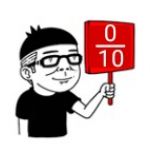Not a member of Pastebin yet?
Sign Up,
it unlocks many cool features!
- \documentclass{article}[14pt]
- % Comment the following line to NOT allow the usage of umlauts
- \usepackage[utf8]{inputenc}
- % Uncomment the following line to allow the usage of graphics (.png, .jpg)
- %\usepackage[document]{ragged2e}
- \usepackage[a4paper, lmargin=1.5cm, rmargin=1.5cm, bottom=1.5cm]{geometry}
- %\usepackage{graphicx}
- \usepackage{color}
- \usepackage{amsmath}
- \usepackage[T1]{fontenc}
- \usepackage{amsfonts} \usepackage{amssymb}
- \usepackage{cancel}
- \usepackage{fancybox}
- \usepackage[all]{xy}
- \usepackage{pst-all}
- \usepackage{tikz}
- \usepackage{gnuplottex}
- \tikzset{flippedeventlabel/.append style={align=center}}
- \usetikzlibrary{matrix.skeleton}
- \usetikzlibrary[shapes,arrows,positioning,fit,backgrounds,intersections,shadows,calc]
- \usetikzlibrary{positioning} \usetikzlibrary{decorations.text} \usetikzlibrary{decorations.pathmorphing}
- %Paquete para Referencias Web
- \usepackage [colorlinks=true,linkcolor=green! 40!blue,citecolor=green!40!blue,filecolor=magenta, urlcolor= magenta]{hyperref}
- %Paquete de estilo de Referencias
- \urlstyle{same}
- \usepackage{pgfplots}
- \pgfplotsset{compat=newest}
- \usetikzlibrary{datavisualization} \usetikzlibrary[shapes,arrows,positioning,fit,backgrounds,intersections,shadows,calc,datavisualization.formats.functions]
- \usetikzlibrary{patterns}
- \usepackage{circuitikz}
- \title{CIRCUITO CON INTERRUPTOR SPDT\\ \bf\texttt{circuitikz}}
- \author{Nimrod Rodríguez\\ \small{nimrodga@hotmail.com}}
- \date{}
- % Start the document
- \begin{document}
- \maketitle
- \begin{circuitikz} [american,blue,information text/.style={rounded corners,fill=red!10,inner sep=1ex}, execute at end picture=
- {
- \begin{pgfonlayer}{background}
- \path [fill=red!10, rounded corners](current bounding box.south west) rectangle (current bounding box.north east);
- \end{pgfonlayer}
- }]
- %Dispositivos (shapes diagram)
- \draw (-2,0) node [cute spdt up arrow,blue,scale=1.2](s1){};
- \draw (s1.north) node[above=0.3] {spdt1};
- \draw (2,0) node [cute spdt down arrow,blue,scale=1.2, rotate=180](s2){};
- \draw (s2.south) node[above=0.3] {spdt2};
- \draw (-3,-2) node [vsourceAMshape, rotate=-90,scale=1.2, fill=red!45](M){};
- \draw (M.south) node[right=1] {\color{red}110 V};
- \draw (3,-2) node [lampshape,fill=yellow,scale=1.2](L){};
- %Nodos
- \draw (s2.out 2) node[above] {\textcolor{red}{\tiny{2B}}};
- \draw (s2.out 1) node[below] {\textcolor{red}{\tiny{2A}}};
- \draw (s1.out 2) node[below] {\textcolor{red}{\tiny{1B}}};
- \draw (s1.out 1) node[above] {\textcolor{red}{\tiny{1A}}};
- %Flujos
- \draw (s1.out 1) to [short, -*,i=$i_0$] (s2.out 2);
- \draw[brown] (s1.out 2) to [brown,short,-*,i=$ $] (s2.out 1);
- \draw (M.west) to (-3,0) to [short, -*,i=$i_0$] (s1.in);
- \draw (s2.in) to (3,0) to [short, -*,i=$i_0$] (L.north);
- \draw [black](L.south) to [-*](3,-3) to [short, -*,i=$ $] (-3,-3) to (M.east);
- %Texto informativo con minipágina
- \draw[xshift=1.85cm,black]
- node[right=3.2cm,text width=7cm,information text]
- {
- \begin{minipage}{6.8cm}
- \begin{center}
- \shadowbox{\texttt{\textcolor{black}{\LARGE{El Switch de 3 Vias}}}} \\
- \end{center}
- \textcolor{orange}{\LARGE{L}}a figura muestra la conexión de una lámpara accionada por dos interruptores tipo spdt (Single Pole Double Throw), conocido comunmente en el mundo de la electricidad como "three ways", y como un \texttt{cute spdt (mid, up o down) arrow} en la librería \texttt{\textcolor{blue!60!red}{\textbackslash usepackage}\textcolor{blue}{\{circuitikz\}$\textcolor{orange!70!red!70!black}{[american]}$}}, en donde la posición \texttt{mid} significa \textit{abriendo} o \textit{cerrando}, mientras \texttt{up} y \texttt{down} significan \textit{abierto} o \textit{cerrado}, dependiendo si no hay continuidad de flujo ó si la hay. En la figura \textcolor{blue}{spdt 1} aparece como \texttt{cute spdt up arrow} y \textcolor{blue}{spdt 2} aparece como \texttt{cute spdt down arrow}, sin embargo ambos en conjunto, tienen el circuito cerrado, pues hay continuidad de corriente \textcolor{blue}{$i_0$}. Un uso común de este circuito, es cuando se desea apagar y encender una lámpara o dispositivo, desde dos lugares diferentes, por ejemplo:
- \begin{itemize}
- \item El primer nivel y el segundo en una residencia, o bien
- \item El interior y el exterior de una residencia.
- \end{itemize}
- \end{minipage}
- };
- \end{circuitikz}
- \vspace{0.5cm}
- \linebreak
- Algunos de los principales detalles en la implementación de esta conexión serían:
- \begin{itemize}
- \item Orientación: En uno de los dos interruptores el polo de entrada funciona como salida, en este caso en el \textcolor{blue}{spdt 2}, por otra parte al conectar, puede hacerse de \textcolor{red}{1A} a \textcolor{red}{2B} y de \textcolor{red}{1B} a \textcolor{red}{2A}; o bien de \textcolor{red}{1B} a \textcolor{red}{2B} y de \textcolor{red}{1A} a \textcolor{red}{2A}.
- \item Cableado: Debido a la comodidad con la cual suele pedirse está conexión y al doble cableado entre ambos interruptores, ha de considerarse la cantidad de cable necesario, así como su calibre debido a la distancia, especialmente cuando se trate de un dispositivo de alto consumo.
- \end{itemize}
- \end{document}
Add Comment
Please, Sign In to add comment

